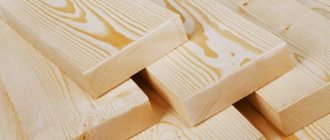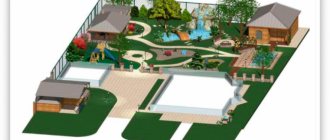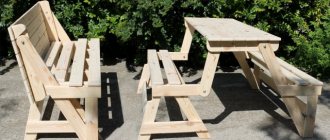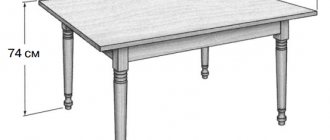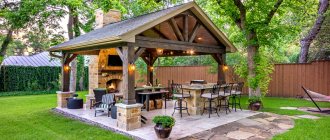Home » Landscape design » Alpine slides
Olga Polyakova 05/12/2020
14796 Views
A magnificent alpine slide in the garden has several advantages. On the one hand, it looks especially beautiful and is suitable for any soil conditions, on the other hand, building a slide will not cause any particular difficulties and is easy to care for.
Alpine slides are considered a wonderful sight and become the real pride of any amateur gardener. In addition, they create an excellent contrast with lawns and regular flower beds. On a slope or hill you can make many different alpine slides in design, shape and content.
It can also be laid out on flat ground. Such a garden, especially with large boulders, combined with a pond or stream, as well as bridges, will ideally emphasize the high status of the owner and create a presentable appearance for the land plot. It will delight the owner and visitors at any time of the year.
You can fill a rocky garden with many plants from high mountain regions. A rock garden is precisely a type of mountain garden, which consists only of alpine mountain plants with intensive filling with stones and gravel. A type of rock garden is a rock garden - this is a rock garden without tiers, tall plants and especially large stones (although there are more stones in it than plants).
Basic postulates
When choosing a place in the country for an alpine slide, experienced designers advise paying attention to the following factors:
- the basic principle of building a rock garden is the absence of symmetry, the design of two or three differences in height;
- choose a place with maximum sun exposure. Its deficiency will lead to the loss of bright colors in the flower garden and, in addition, the plants will stretch out, become thinner, and the stone garden will lose its attractiveness;
- proximity to trees will bring unnecessary trouble, as falling leaves will spoil the appearance of the alpine slide;
- when arranging, rely on stones of unusual shapes. If they are gray, surround them with bright colors.
Whatever type of rocky flowerbed you choose, you will need a standard set of plants and stones.
Planting
Planting process
Anyone who carefully and in advance selects plants for planting will be satisfied with their rapid growth and will save themselves from the unnecessary hassle of caring for them. The choice should take into account the degree of illumination of the site and its soil conditions . Here optimal conditions for plant growth will be provided. In the end, there are no alpine hills that are planted with monotonous deciduous plants.
A rock garden, which will be filled mainly with high-mountain, alpine plants, will look especially luxurious. Evergreen and coniferous dwarf shrubs will complement the image, as they are very beautiful even in winter, under the snow and grow very slowly.
Grasses, herbaceous annuals, perennials or tuberous plants should be among relatively tall plants such as thyme or lavender. Ground cover plants are important for maintaining an attractive appearance throughout the genus. These can be aubrieta, sedum
Stone, flowers and water
The basic principle of a rock garden is the arrangement of flowers and stones: the largest stones are located at the top, creeping types of flowers and small stones live at the foot.
The slide always (except in winter, of course) looks original and compact. Flowers can be placed on artificial terraces seasonally.
And the rock garden also surprises owners as an unusual landscape find: it is created not only in the form of a flower bed, but also on a terrace, porch or in a flowerpot.
We recommend reading:
- Effective Weed Killer - Review of the Best Weed Removal Products and Methods. Geotextiles and rules for their installation (145 photos and videos)
Flowers for a flower bed that bloom all summer - a review of unpretentious types of flowers for the whole summer (85 photos)
Do-it-yourself trellis - 110 photos on how to make it yourself and video tips for use in landscape design
If space, time and technical means allow, the owners create a slide and a pond in the complex. Sometimes even with a waterfall. To do this, you will need certain tools, an old bathtub or other container, and special instructions from the Internet.
We won’t go into detail here; our task is to tell you how to make an alpine slide in the easiest way.
To start arranging a rock garden, a summer resident needs to decide which option he would like to see on his site:
- an alpine slide in a flowerpot is an original solution for a summer house with a small piece of land. The mobile structure can easily be moved indoors for the winter;
- a typical rock garden is located in terraces in open space;
- the third option is the most time-consuming, but also the most effective: a rocky flowerbed with a pond, waterfall or fountain.
conclusions
An alpine slide is suitable for every site! An important factor is the uneven surface and favorable slope. Especially large plants look good between stones. Plants should be chosen so that at least one always blooms.
Proper soil is vital for good plant development. The alpine slide should not be too dry, but slightly moist. Ground cover plants placed between bulbous or small trees around a small pond will create perfect harmony. And birds and other small animals will feel comfortable there.
Selecting a location
The technology for creating a rock garden involves a phased division of work.
To avoid mistakes when arranging it, novice gardeners are advised to follow the step-by-step instructions.
Find a place for the future flower garden away from trees and drainpipes. In the first case, the foliage will cover the rocky garden, in the second, the water will wash away our structure.
We recommend reading:
Laying artificial turf with your own hands: how to choose and step-by-step description of how to lay a lawn (100 photos)How to lay rolled lawn - step-by-step master class and tips on how to lay rolled lawn correctly (120 photos + video)
The best flower clock - a step-by-step description of how to make a beautiful element of landscape design correctly
If there is a slope at your summer cottage, it will be an ideal place for an alpine slide. It is easy to recreate terraces here and even build a small waterfall. On a level area, an embankment of soil and stones is created artificially.
To avoid mistakes with sizes, landscape designers recommend sticking to a percentage ratio of 1:10. That is, if the plot is 6 acres, a rock garden with a height of 60-100 cm does not go beyond the boundaries of 6-8 square meters.
Scheme
Then they begin to create a sketch of the alpine slide: they think through the number, size and arrangement of stones, taking into account the relief, determine the shape of the composition, and the order of planting.
Selection of stones
Is it worth mentioning that when building a natural mountain landscape, only natural materials are suitable. Only garden figurines can be artificial to decorate the finished slide.
For the rock garden, durable and moisture-resistant stones are selected. Granite and large crushed stone are suitable. And layered sandstone perfectly imitates mountain ledges.
Season matters
You need to take care of the wintering of the rock garden in advance. Those plants that are not adapted to our climate and are unlikely to survive the winter will have to be dug up and transplanted into tubs. Other plants are wrapped in agrofibre - this type of material prevents damping off.
The shrub called “ephedra” must be covered entirely and tied with braid.
Snow will save the hill from severe frosts and wind. It is also advisable to place shields around the perimeter, which can serve as sheets of plywood, slate or parts of old furniture. The reservoir at the rock garden must be drained or several rubber balls thrown into it - they will take the pressure of the ice. The pump with hoses must be removed and stored in the country house.
When the winter storms are behind us, it’s time to prepare the “paradise” near your home for the new season. From the beginning of spring, it will be necessary to eliminate the consequences of snowfalls, blizzards and melt water.
- Some plants, unfortunately, die. The stones may have slipped, and the entire round hill is covered with the rotten remains of the former flower garden. First of all, you need to work with a rake, removing rotten leaves. Then put the boulders in place, add fresh soil and gravel, and then plant the plants that overwintered in the warmth and add new ones.
Rocky-flower composition
Construction begins in the spring or summer, so that by autumn its formation is completed and the flowers have time to take root.
A pit is dug 20 cm deep.
If you want to decorate a rock slide with a small pond, now is the time to install it. The presence of an artificial lake will significantly enliven the overall appearance of the slide. Tips on setting up a mini-pond can be found in many articles.
The bed under the rock garden is filled with fine pebbles in a layer of 15-20 cm. Broken bricks and construction waste (of course, without harmful impurities) are suitable for this purpose.
A layer of fertile soil with the addition of fine gravel is poured on top. To compact the layers of soil and drainage, they are filled with water. This is done to ensure that the structure does not sag over time.
Next, the stones are installed. Please note that the principle of building an alpine slide is based on descending. The largest boulder is located at the top, the smallest ones are at the foot. The higher the composition, the more stones are used to create it.
Installing large boulders and layered terraces will require holding them together with cement or clay mixed with soil.
Repeat the mountain landscape by creating a copy of it on your site. Model tiny gorges, plateaus, cliffs, cliffs and terraces on the slide.
Care
A planted alpine hill needs less attention than a regular garden or flower bed, which is ideal for amateur gardeners with limited time resources. Weed infestation is usually prevented by placing gravel around the mound and using non-greasy soils. Or they are promptly deleted.
Various infections, bacterial infections, rot, which are caused by high humidity, are prevented by sufficiently good drainage. Also, rock gardens rarely need fertilizing and fertilizers, and mountain plants rarely need to be pruned due to their very slow growth. However, very eroded soil should be replaced.
Watering is only necessary during the particularly hot, dry summer months. Seeds of other plants should be regularly prevented from getting onto the hill and their further settlement in the rock garden. Because mountain plants grow slowly, they are quickly overwhelmed by other, more active crops.
A real gem of the garden
Various slugs, snails and other pests must also be strictly removed. Mosses must be dealt with in the same way. After removal, loosening the soil with sand or limestone helps against them.
An alpine slide with natural stones is suitable for both large and small gardens. Rolling hills look especially beautiful, and low, colorful carpets of plants will look great among dwarf conifers. A pond or stream can also be combined into a common composition with a rock garden. But they must be of appropriate sizes. Remember that in rock gardens, paths or places where you can walk are laid with flat stones or fine gravel. Driftwood or other decorative objects can add variety and set the necessary accents.
Amazing decoration in front of the house facade
You can also place containers or pots of seasonal plants on flat rocks. Depending on the differences in the flowering season of trees and grasses. Of course, the shape and size of the stones are primarily important for an alpine slide. However, in everything you should observe moderation and adhere to style. Take an example from nature.
General form
When the stones are installed and the spaces between them are filled with soil, it is time to start landscaping on the rocky area.
To harmoniously place plants, professionals advise not to plant flowers right away. Place pots with plants around the rock garden, move them, look for the most advantageous location, and design a harmonious composition.
While the plants are not planted in the ground, pay attention to the finished appearance of the living structure. The overall picture should resemble a natural landscape - stepped rocky terraces with a colorful plant carpet and shady hollows.
Marking
The next step is to transfer the diagram to the selected area: this can be done using pegs and rope. A pit is dug according to the markings: if the soil is sandy, then 30 cm deep, if the soil is oily, then deeper. The bottom is compacted, a metal mesh and geotextile fabric are laid on it.
Note!
- How to make a hot smoked smokehouse - 75 photos of the best ideas and step-by-step instructions
Molds for paving slabs - easy instructions on how to make them yourself (80 photo ideas)
Feeder for chickens - ideas, description of construction and features of creating feeders from scrap materials
Greens for stones
What distinguishes a rock garden from an ordinary flower garden is a well-chosen set of floral, coniferous and artisanal plants.
The main requirements for it are decorative qualities, unpretentiousness, long flowering. When planting flora, it is advised to take into account the ratio: 1 coniferous plant, 2 shrubs, 3-4 flowering plants. They are planted starting from the top, gradually descending to the foot. The soil around the plants is mulched with fine crushed stone. This will retain moisture and protect the sprouts from weeds.
Not all flowers growing in flower beds are suitable for alpine hills. Preference is given to perennial, slow-growing and frost-resistant species. According to the growth form, low-growing, creeping and ground cover flowers are chosen.
The rock garden is visually divided into three tiers and each has its own climatic conditions.
The upper tier is more susceptible to winds and drought than others. Therefore, you need to place flowers on it that love the sun and are not afraid of drafts and lack of moisture. These can be edelweiss, bergenia, echinacea and lavender.
The average level is characterized by moderate humidity and not much light. Chest, Carpathian bell, hosta, purslane and young (stone rose) feel good in such conditions. The last two species are ideal settlers for a stone hill. They live well in rocky crevices.
Plants that love moisture and shade will take root on the third tier. Indian duchesnea, primrose, thyme (thyme), awl-shaped phlox, and saxifrage will bloom in lush colors in such conditions.
Also, to simulate a natural landscape, carnations, cinquefoil (St. John's wort), violet, low-growing iris, rhodiola, periwinkle and marigolds are planted.
Planning
Before you start work, decide on the size of the slide and plan it by drawing it. You need to calculate how many and what kind of stones you will need, what plants and in what place of the hill you plan to plant them.
You can also do the opposite: if you already have the material, in particular stones, plan the slide based on their availability.
General recommendation: if you are creating a slide in a small summer cottage, make it low - 0.5-0.8 meters in two or three tiers. The main design rule is to avoid symmetry.
Harvest on the stones
Did you know that sometimes an alpine slide is made not only for flowering plants? The originals plant vegetables on it.
True, the composition has to be removed every autumn. But there is a practical use for the tiny rock garden area.
Parsley, basil, mint, lettuce, dill, and lemon balm are planted on the vegetable rock. Tomatoes, eggplant, peppers, and strawberry bushes will add bright colors. Such a hill will require more care than a flower one, since it needs to be fertilized, weeded and harvested.
Numerous master classes on creating an alpine slide, photos from the Internet will inspire you to create a wonderful recreation area in your summer cottage.
And don’t let the small difficulties associated with its construction scare you. The reward will be the admiration of friends and acquaintances and the pleasure of contemplating the work of your hands.
On summer evenings, sitting near a rock garden with a pond, what could be better than enjoying the peace, listening to the murmur of water and the croaking of a frog that has settled in the pond.
Stages of creating a rock garden
From the area allocated for the rock garden, a layer of soil up to 30 cm is removed, the roots of weeds are cleared, and a crushed stone or gravel cushion is placed in this place.
Instead of crushed stone, you can use broken bricks and fragments of building blocks. This will be drainage that will not prevent moisture stagnation. This stage is important because the vegetation in the rock garden is mostly drought-resistant and does not tolerate waterlogging of the soil.
The next stage is modeling the mountain landscape.
An embankment is made from small stones, crushed stone and earth. The largest stone blocks are placed on it first, and the space between them is filled with smaller parts. During the process of laying stones, you need to inspect the slide from time to time from a certain distance in order to make changes in time if necessary.
Advice. It is recommended to dig some boulders into the soil to a third of their height, or add soil under them. This technique contributes to a more natural, natural landscape.
The structure is spilled with water and left for two weeks. During this time, the soil will shrink under the weight of the blocks, and the hill will be ready for planting.
Recommendations for Beginners
To get a chic decoration in the form of a flower-stone composition for your site, you must adhere to the following recommendations:
- conditionally, you need to divide the hill into sectors in which there is room for a flat part, scree, rock and ascent;
- for best perception, it is better to use no more than four spots of different sizes against a green background;
- Do not use factory decorations.
Each owner gets his own special rock garden, each with its own unique twist. Even the most unexpected things can come in handy when working with it. For example, you can grow flower seedlings in egg trays and then plant them in the ground.
At first, the rock garden will need to add new soil and constantly strengthen the stones. The soil must be poured evenly and compacted after each watering or rain.
Plants also require attention. Do not forget about timely watering, cutting off dried flowers and leaves.
You can fertilize the plant several times over the summer, but be careful with nitrogen fertilizers. They have an excessive effect on the growth rate of plants, which is not entirely good under composition conditions. Overfeeding plants will result in unkempt overgrowths.
It is better to water the rock garden using a sprayer to minimize soil erosion. It would be a good idea to check the stones for strength - they should not wobble. If necessary, insect repellents can be used and diseased plants can be removed immediately. The soil at the site of the diseased plant will also have to be replaced.
Interesting landscape design options
Park areas are rarely complete without the dazzling beauty of a rock garden or rock garden. It’s no wonder that many people want to have such beauty before their eyes all the time. It is unlikely that anything could be fresher, more beautiful and charming than such a composition on a personal plot.
Below are interesting examples of rock gardens and rock gardens for inspiration, because work on each site will require a unique project.
An example of a classic rockery in the Japanese style. A minimum of plants among the lifeless stone landscape.
Alpine slide irrigation system
If the substrate is properly prepared and mulched, then the flower garden is watered only during the dry period. Mulch retains moisture and is added once a year. Cold water is suitable for alpine flora; flowering garden and indoor plants like warm watering. Drip irrigation will make caring for the rock garden easier. The irrigation system can be quickly installed with your own hands from ready-made kits. The kit consists of micro-hoses with droppers, through which water flows from the storage tank to the roots. They develop better, the appearance of conifers improves, and the immunity of seedlings is strengthened. With drip irrigation, a crust does not form, and there is no increased evaporation, which harms flowering plants. The volume of water released can be adjusted by the control unit.


